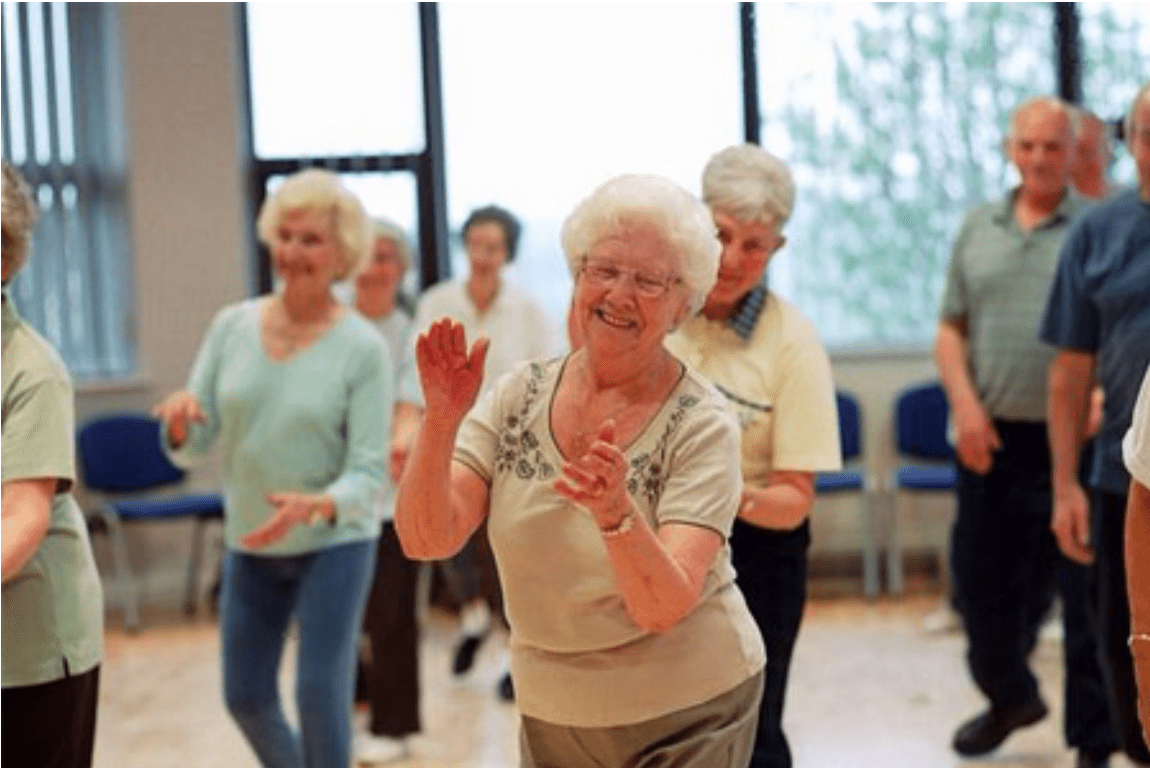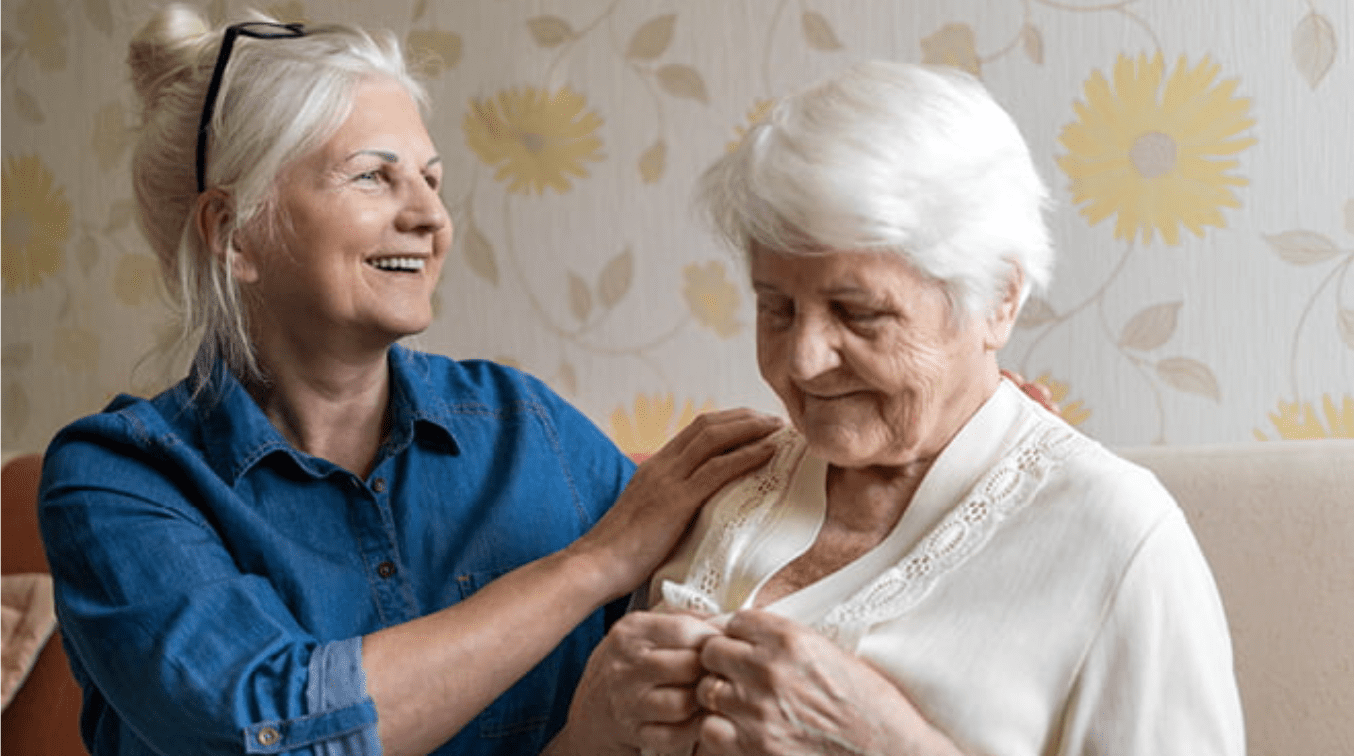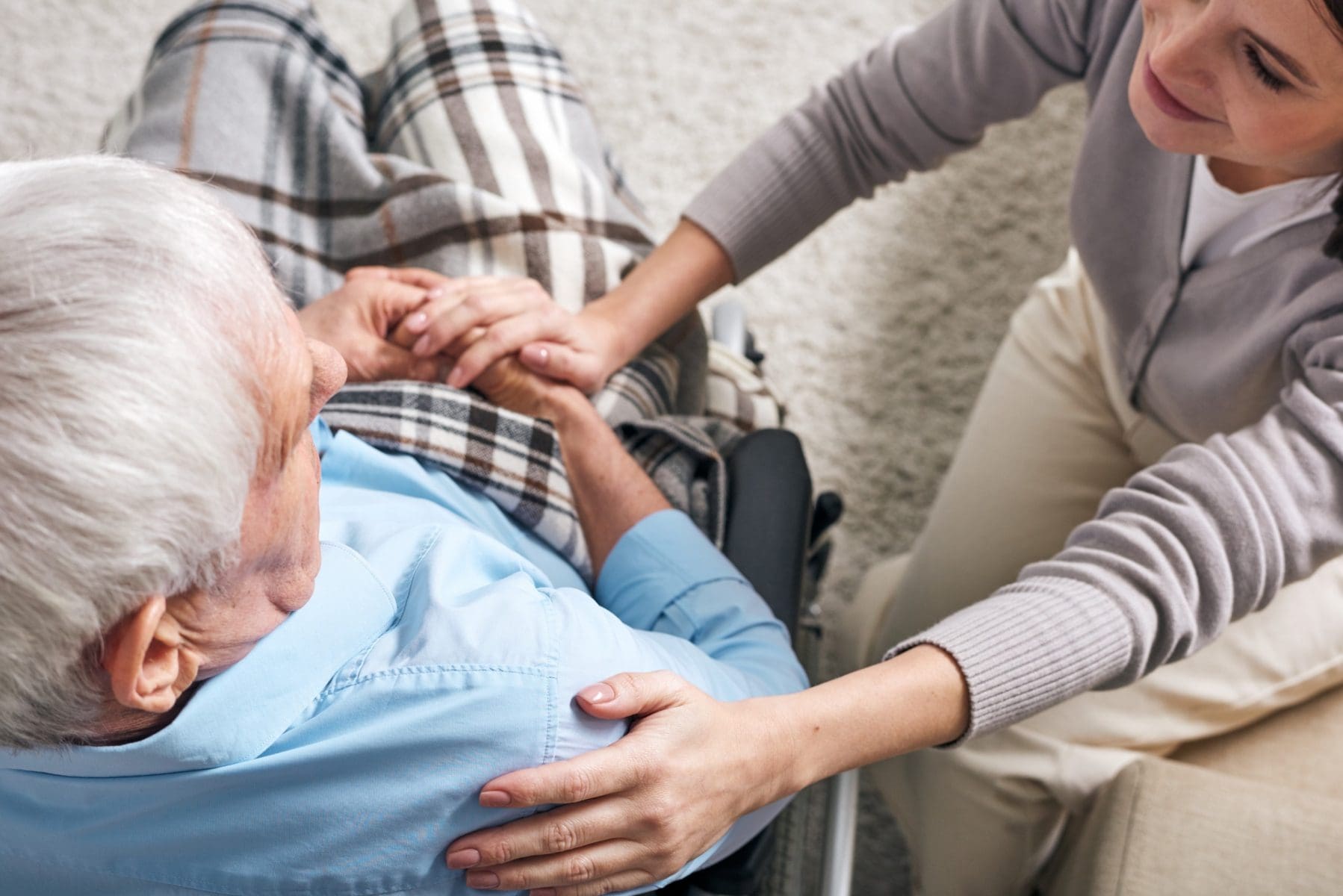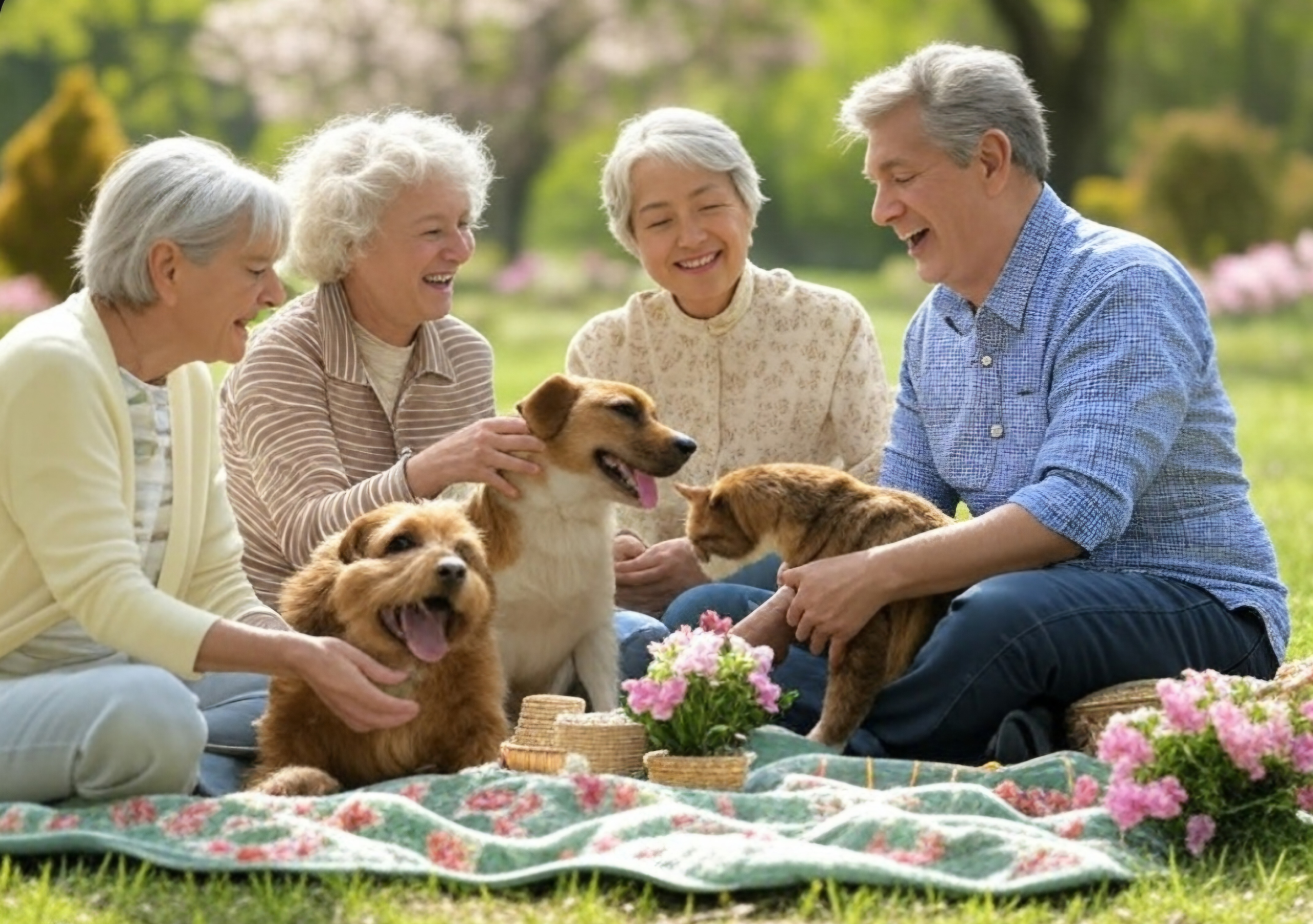
Elderly Care: Meaningful Gifts for Parents
November 1st, 2025Caregiver Agency, Elderly Care, Polish Care Services, Uncategorized,
As the holiday season approaches, thoughts often turn to gift-giving and how to express our love and appreciation for those we cherish. When it comes to elderly care and appreciation for your parents, selecting thoughtful gifts can be particularly meaningful, enhancing their comfort and happiness. This article will guide you through choosing gifts that are not only practical but also resonate emotionally, making the holidays special for your elderly parents.
Understand Their Needs
Before selecting a gift, take time to reflect on your parents’ current needs and preferences. Are they dealing with mobility issues? Do they have hobbies that can use some enhancement? Understanding what they might find useful or enjoyable is crucial. Personalized gifts, such as custom photo albums or engraved items, show thoughtfulness and consideration for their individual interests.
When buying gifts for elderly parents, practicality is paramount. Look for items that can improve their daily lives—whether that’s a comfortable blanket, ergonomic kitchen tools, or easy-to-read books. Practical gifts serve a dual purpose: they are useful and show that you understand their lifestyle and needs.
Create Experiences
Gifts don’t always have to be physical items. Consider giving the gift of experiences, which can create lasting memories. This could include tickets to a concert, a subscription to their favorite magazine, elderly care visits, or even a planned family outing. Experiences allow your parents to feel engaged and connected, creating joyous moments that physical gifts may not offer.
Plan activities that you can do together, like cooking classes, craft sessions, or even simple movie nights. These shared experiences can strengthen your bond while also providing enjoyment and engagement. Activities tailored to their interests help maintain their mental well-being and can be a cherished part of their holiday season.
Focus on Comfort
As your parents age, comfort becomes increasingly important. Luxurious slippers, plush robes, or heated blankets can offer physical comfort during colder months. Gifts that prioritize comfort not only elevate their daily living experience but also show that you care for their well-being.
Consider gifts that can aid in maintaining health, such as an electronic pill organizer, a soft seat cushion, or massage devices designed for soreness and stiffness. Health-related gifts demonstrate that you are attentive to the challenges they may face and are concerned about their quality of life.
Tailor Gifts to Their Interests
Identify your parents’ hobbies and interests to select gifts that align with their passions. Whether it’s gardening, knitting, or reading, thoughtful gifts related to their hobbies can boost their morale and provide enjoyment. For example, if your parent loves gardening, consider gifting them tools designed for ease of use or personalized gardening labels.
Introduce technology that can enhance their hobbies or daily routines. Tablets with large screens for easy navigation can be gifted with pre-loaded books or games. Smart home devices, like voice-activated assistants, can help them manage tasks such as reminders for medications or controlling appliances, enriching their daily life while providing safety and convenience.
Make It Sentimental
Consider gifts that help preserve family memories, like heritage journals where they can document their life stories or family tree projects. These legacy gifts can provide a sense of purpose, allowing elderly parents to reflect on their lives and share their wisdom with future generations.
Creating family keepsakes, such as scrapbook albums filled with photos and messages from family members, can spark joy and nostalgia. They’re not just gifts; they become treasured family heirlooms, fostering a sense of connection that transcends time.
Prioritize Safety and Ease of Use
When choosing gifts, include items that promote safety in their living environment. This might range from night lights to avoid falls to non-slip mats for the bathroom. Ensuring their safety demonstrates your love and concern, addressing a fundamental need in their daily lives.
Gifts that incorporate user-friendly technology can greatly enhance their quality of life. Consider devices with larger buttons, voice controls, and simple instructions, which can help them stay connected without the frustration that complicated devices may cause. Devices like mobile phones made for seniors can help them communicate with family easily.
Thoughtful Gift Wrapping
Don’t underestimate the impact of good presentation. Thoughtfully wrapped gifts can enhance excitement and anticipation. Use festive wrapping that resonates with the holiday season, and include heartfelt notes with each gift. A personal touch adds a layer of warmth to any gift.
Encourage family members to join in on the gift-giving process by presenting gifts together. This can create a more personal environment and allows for shared experiences as everyone watches your parents unwrap their gifts, creating moments filled with laughter and joy.
Plan for Future Needs
When choosing gifts, think about future needs. For instance, gift subscriptions for meal delivery services or home cleaning services can take burden off your parents, allowing them to focus on enjoying their time rather than dealing with chores.
Keep in mind the importance of flexibility in your gift choices. Gifts that can be easily exchanged or adjusted to suit their changing needs show that you are thoughtful and attentive to their evolving circumstances. Offering gift certificates to their favorite stores or services provides them with the autonomy to choose what they need or want.
Conclusion
Choosing meaningful gifts for your elderly parents during the holiday season can be a rewarding experience that deepens your connections. By focusing on their needs, interests, and preferences, you can select gifts that are both practical and sentimental. Remember that the best gifts often come from the heart, reflecting your love and appreciation for all they have done. By enhancing their lives with thoughtful presents, shared experiences, and emotional connections, you can ensure the season is filled with warmth, joy, and lasting memories for your elderly parents.
Credit: Melissa Ryan for Polish Care Services a caregiver agency for seniors

Elderly Care: The Power of Music and Movement
October 24th, 2025Caregiver Agency, Elderly Care, music for seniors,
As people age, the need for holistic care that nurtures both body and mind becomes increasingly important. Music and movement, two seemingly simple activities, have been shown to offer a range of physical, emotional, and cognitive benefits for older adults. From boosting mood and improving mobility to enhancing social interaction, music and movement can serve as essential tools in elderly care, fostering a sense of well-being and independence.
In this article, we explore the significant benefits that music and movement can bring to elderly care, outlining the science behind these benefits and offering practical ways to incorporate them into the daily routine of seniors.
1. Physical Health Benefits of Music and Movement
As aging brings about a variety of physical challenges—such as reduced mobility, joint stiffness, and decreased muscle strength—music and movement can play a vital role in improving physical health. Engaging in rhythmic exercises or dances to music helps to:
Increase Mobility and Flexibility
Regular movement to music, especially activities like dancing, stretching, and simple exercises, can enhance joint flexibility and range of motion. These activities can help combat stiffness and improve overall mobility, making it easier for elderly individuals to perform daily tasks.
For example, studies have shown that movement to rhythm, whether through seated exercises or standing dance routines, helps improve coordination and balance. This is particularly important for elderly individuals who may be at risk of falls.
Enhance Cardiovascular Health
Music can help motivate seniors to engage in physical exercise, such as walking or aerobic dancing. The rhythmic beats encourage a steady pace, while the fun and enjoyable nature of music often helps participants work out longer without feeling fatigued.
Research has demonstrated that listening to music during physical activity can lower heart rates and reduce blood pressure, which contributes to better cardiovascular health.
Promote Strength and Endurance
Movement exercises that incorporate music help seniors maintain and even build strength. For example, walking to a rhythmic beat or doing chair exercises can engage muscles in a gentle yet effective way. In a supportive environment, seniors are often encouraged to work at their own pace, which helps prevent injury while still challenging the body to build endurance.
2. Emotional and Psychological Benefits
Music has long been recognized for its emotional and psychological impact. When combined with movement, it can provide a powerful outlet for expression, connection, and emotional healing.
Reduce Stress and Anxiety
The soothing effects of music are well-documented. Studies have found that listening to calming music can lower cortisol levels, the hormone responsible for stress, in both younger and older adults. When seniors engage in movement with music, they are not only improving their physical well-being but also lowering anxiety and stress levels.
For seniors who experience loneliness or depression, music and movement offer a way to reduce feelings of isolation. Group music and movement sessions—whether it’s a dance class, a singing group, or a seated exercise group—foster social interaction, which is crucial for emotional health.
Boost Mood and Fight Depression
Music can trigger the release of endorphins, the brain’s “feel-good” chemicals. When seniors participate in music-based activities, such as group singing or dancing, their mood can significantly improve, promoting a sense of joy and well-being. This is particularly beneficial for seniors suffering from depression or those who experience mood fluctuations due to chronic illness or dementia.
Music has also been shown to decrease symptoms of depression by encouraging positive reminiscence. Many older adults have fond memories of songs from their youth, and hearing familiar tunes can evoke pleasant memories and a sense of nostalgia, improving overall emotional health.
Enhance Social Interaction
Group music and movement activities provide an excellent opportunity for seniors to socialize. Whether it’s a group singing session or a partner dance routine, these activities encourage communication, cooperation, and camaraderie. Social connections are vital for elderly individuals, as they can reduce feelings of loneliness and enhance overall life satisfaction.
Moreover, music has a universal quality that transcends barriers like language and cognitive impairments, allowing individuals with dementia or Alzheimer’s to engage with others and participate in meaningful ways.
3. Cognitive and Mental Benefits
In addition to physical and emotional benefits, music and movement play a crucial role in maintaining cognitive health. The brain’s response to music and rhythmic movement can enhance memory, focus, and overall mental acuity.
Improve Cognitive Function and Memory
For seniors, particularly those experiencing early stages of dementia or Alzheimer’s disease, music-based activities can help preserve cognitive function. Rhythmic activities, such as playing an instrument or clapping to a beat, stimulate different parts of the brain involved in memory and learning.
Studies have shown that engaging in musical activities, especially ones that require active participation (e.g., singing, drumming, or dancing), can improve short-term memory, attention span, and problem-solving abilities. For seniors with dementia, music often sparks recollections of past events, helping them feel more connected to their personal history.
Stimulate Brain Activity and Neuroplasticity
Music stimulates multiple areas of the brain, including those responsible for emotions, memory, and motor control. When combined with physical movement, the brain is challenged to engage in both mental and physical processes simultaneously, promoting neuroplasticity—the brain’s ability to form new neural connections. This can be particularly beneficial for seniors experiencing age-related cognitive decline.
A 2013 study found that elderly individuals who participated in music therapy showed increased brain activity and improved cognitive function compared to those who did not engage in musical activities. The rhythm and melody of music activate regions of the brain that support learning, which can help seniors retain information and enhance cognitive performance.
Support Focus and Attention
Music and movement activities can also help seniors improve their focus and attention. The structure provided by rhythmic patterns helps seniors stay engaged and aware of their surroundings, which is particularly helpful for individuals with cognitive challenges. By concentrating on the rhythm and movement, seniors can maintain mental clarity and sharpen their attention span.
4. Incorporating Music and Movement into Elderly Care
Given the numerous benefits, incorporating music and movement into the daily routine of elderly individuals can be a transformative practice. Here are some practical ideas to include music and movement in elderly care:
Group Dance Classes or Chair Aerobics
For elderly individuals with varying mobility levels, chair aerobics is an excellent way to engage in movement to music without strain. These classes typically focus on upper body movements, stretching, and gentle aerobics, all set to rhythm. Group dance classes, including styles like ballroom or line dancing, provide an opportunity for seniors to enjoy physical activity while socializing with others.
Music Therapy Sessions
Music therapy, led by a trained therapist, can be an enriching experience for elderly individuals, particularly those with dementia or Alzheimer’s. Music therapists use songs and instruments to evoke memories, improve communication, and foster emotional well-being. These sessions are often tailored to the individual’s preferences and needs, ensuring a personalized approach to care.
Personalized Playlists for Relaxation or Stimulation
Creating personalized playlists of favorite music for seniors can be an effective way to enhance daily routines. Whether it’s playing calming music to help with relaxation or more upbeat tunes to motivate movement, music can be a powerful tool for enhancing quality of life.
Active Listening and Group Singing
Encouraging seniors to participate in group singing, whether in a choir or casual gathering, can create a sense of community while boosting mood. Active listening to music can also be beneficial—helping seniors mentally engage with familiar tunes or rhythms in a relaxed environment.
Conclusion
Music and movement offer a myriad of benefits for elderly individuals, impacting everything from physical health to emotional and cognitive well-being. By integrating these activities into elderly care routines, caregivers can significantly improve the quality of life for seniors, providing them with opportunities to stay active, socially engaged, and mentally stimulated.
Whether through group activities, personalized playlists, or music therapy sessions, music and movement can serve as valuable tools for enhancing the overall well-being of elderly individuals, fostering independence, and nurturing a sense of joy in their daily lives.
Credit: Melissa Bryant for Polish Care Services a Caregiver agency for seniors

Preparing for the Holidays with Your Elderly Loved Ones
October 18th, 2025Caregiver Agency, Cleaning Services, Elderly Care, Uncategorized,
The holiday season is a time of joy, family gatherings, and creating lasting memories. For many, it’s an opportunity to reconnect with loved ones and share experiences. However, when it comes to elderly family members, the holiday season might bring unique challenges that require extra consideration and care. This article explores various aspects to prepare for the holidays with your elderly loved ones, ensuring that everyone enjoys a fulfilling celebration.
Understanding the Needs of Elderly Loved Ones
As we age, our physical and mental health needs change. It’s essential to recognize these changes, especially during busy holiday gatherings. Common considerations include:
– Health Considerations: Many elderly individuals have chronic health conditions that may require specific accommodations. It’s important to keep track of any medications, dietary restrictions, or medical needs.
– Mobility Challenges: Some seniors may have difficulty with mobility due to arthritis, joint issues, or past injuries. This affects their ability to participate in various activities or navigate spaces comfortably.
– Cognitive Functions: Seniors may experience cognitive decline, making it crucial to be patient when engaging in conversations or activities. Keeping the atmosphere friendly and supportive can significantly enhance their experience.
Planning Family Gatherings
A successful family gathering begins with thoughtful planning, especially for elderly loved ones. Start with these key points:
- Choosing a Suitable Venue: Opt for a location that is familiar and accessible to your elderly relatives. If gathering at home, ensure that the space is free of hazards—such as loose rugs—and has enough seating for everyone.
- Timing and Accessibility: Plan the event at a time of day when your loved ones feel most energetic and comfortable. Avoid late-night gatherings, as many seniors tend to rest early.
- Involving Family Members: Engage your elderly family members in the planning process. Ask for their input on activities or food that they would like to have. This ensures they feel valued and included.
Holiday Activities for Seniors
Engaging elderly loved ones in holiday activities fosters connection and joy. Here are a few ideas:
– Crafting Holiday Decorations: Simple crafts, such as making wreaths or decorating ornaments, can be a great way to include seniors in the festivities. This activity not only sparks creativity but can also evoke fond memories of past holidays.
– Cooking Together: Involve your elderly loved ones in preparing traditional holiday dishes. Sharing kitchen duties can be a joyful experience, and it provides an opportunity to pass down family recipes and stories.
– Games and Entertainment: Organize games that are accessible for seniors, such as card games or board games with large print. Sharing holiday movies or music can also create a festive atmosphere while allowing everyone to participate comfortably.
Caring for Seniors During the Holidays
Caring for elderly family members is about being attuned to their physical and emotional needs:
– Understanding Emotional Needs: The holiday season can stir feelings of loneliness or sadness in seniors, especially if they have lost loved ones or are unable to participate in traditional celebrations. Make an effort to have heartfelt conversations and encourage them to share their feelings.
– Providing Physical Support: Offer assistance with physical tasks—be it setting the table, getting food from the kitchen, or navigating stairs. This not only shows your care but also encourages them to remain active without overexerting themselves.
– Monitoring Health and Medication: If your loved ones have specific medications, create a simple schedule to keep track of their intake throughout the gatherings. Ensuring that they remain on track with their health requirements is key to their enjoyment.
Gift Ideas for Elderly Loved Ones
Thoughtful gifts can speak volumes, showing your elderly family members that you care. Here are some gift ideas:
– Personalized Gifts: Consider customized items like photo books filled with family memories, or a framed family portrait. This adds a personal touch and cultivates a sense of belonging.
– Practical Items: Gifts that aid in daily living are both thoughtful and useful. Items like non-slip mats, easy-open containers, or ergonomic kitchen tools can significantly improve their quality of life.
– Experience-Based Gifts: Rather than physical items, consider gifting experiences—like a day outing to a favorite place, or tickets to a show. Creating memories together can be the most treasured gift of all.
Emotional Support for Seniors
Providing emotional support is crucial during the holiday season. Here’s how to do so effectively:
– Importance of Companionship: Spend quality time with your elderly loved ones. Simple conversations, storytelling, or reminiscing can make them feel valued and connected.
– Recognizing Signs of Distress: Be vigilant for signs of depression or anxiety in seniors, such as withdrawal from activities or changes in mood. Approach these situations with empathy and encourage them to express their feelings.
Creating a Warm Atmosphere: Foster a festive and inviting environment where all family members feel comfortable and included. Encourage laughter, share stories, and involve everyone in rituals, leading to an uplifting experience.
Conclusion
Preparing for the holidays with your elderly loved ones doesn’t have to be overwhelming. By taking the time to understand their unique needs and planning accordingly, you can create a warm, inclusive, and joyful environment for everyone involved. During this holiday season, commit to making meaningful memories that will be cherished for years to come, fostering deep connections that enrich the lives of your family members, young and old.
Credit: Melissa Rivers for Polish Care Services, a Caregiver Agency and Cleaning Company

Activities for the Elderly to Keep Healthy and Happy
October 10th, 2025Activities for Seniors, Activities for the elderly, Caregiver Agency, Caregiver Services, caregiver support, Elderly Care,
As we age, maintaining our physical and mental well-being becomes increasingly important. Engaging in regular activities not only keeps the elderly fit but also enhances their overall happiness. This article provides an assortment of enjoyable and beneficial activities tailored for older adults. We’ll explore various forms of exercise, social engagement, and hobbies that can contribute to a healthy and fulfilling lifestyle.
- Physical Activities
Walking and Hiking
One of the simplest yet most effective activities for seniors is walking. It’s a low-impact exercise that can be done almost anywhere—be it outdoors in a park or indoors at a mall. Regular walking helps improve cardiovascular health, enhances mobility, and elevates mood. For those who enjoy nature, hiking can be a wonderful option. It combines exercise with the tranquility of the great outdoors, adding an element of adventure and exploration.
Yoga and Tai Chi
Both yoga and tai chi are excellent options for elderly individuals seeking to improve flexibility, balance, and strength. These gentle forms of exercise are low-impact yet highly beneficial, aiding in coordination, reducing stress, and enhancing mental clarity. Many community centers and local gyms offer classes specifically designed for seniors, making it easier than ever to get started.
Strength Training
Incorporating strength training into a weekly routine is crucial for maintaining muscle mass and bone density. Many seniors might feel intimidated by weightlifting, but there are safe ways to strength train without heavy equipment. Resistance bands and light weights are great for improving strength, and chair exercises can make these activities accessible for those with limited mobility.
- Social Activities
Group Classes and Clubs
Social interaction is vital for emotional well-being, especially for the elderly. Participating in group classes—such as art, cooking, or dance—can help foster new friendships and combat loneliness. Many communities have clubs or organizations designed for seniors, providing opportunities for bonding over shared interests. Whether it’s a book club or a chess team, engaging in these activities can make a significant difference in mental and emotional health.
Volunteering
Giving back to the community can instill a sense of purpose and fulfillment in seniors. Volunteering allows elderly individuals to share their skills and knowledge while connecting with others. Whether it’s helping at a local food bank, offering tutoring services, or participating in community events, volunteering can help seniors feel actively involved in society and valued.
- Cognitive Activities
Puzzles and Games
Keeping the brain active is just as important as maintaining physical health. Engaging in puzzles, crosswords, and brain games can stimulate mental activity and improve cognitive functions. Board games and card games also offer a fun way to challenge the mind while providing social interaction. Many seniors find that participating in these activities sparks joy and can even enhance memory skills.
Learning New Skills
Learning doesn’t stop in old age; in fact, it can be a delightful pursuit! Seniors can take classes to learn new skills—like painting, playing a musical instrument, or even learning a new language. Many community colleges offer courses specifically designed for older adults. Challenging the brain with new skills can boost self-esteem and keep the mind sharp.
- Creative Activities
Arts and Crafts
Engaging in creative activities can be incredibly therapeutic for seniors. Arts and crafts are excellent for self-expression and can bring about feelings of accomplishment. Activities such as painting, knitting, or scrapbooking allow for creativity while also fine-tuning motor skills and hand-eye coordination. Community art classes are often available and can serve as a wonderful platform for socializing.
Gardening
Gardening is an enjoyable activity that can provide both physical exercise and mental enjoyment. Tending to plants can be very rewarding as it allows individuals to see the results of their efforts. Whether it’s planting flowers, growing vegetables, or maintaining a small herb garden, the act of gardening encourages physical activity, nurtures creativity, and can even lead to healthier eating habits.
- Mindfulness and Relaxation
Meditation and Mindfulness Practices
Incorporating mindfulness practices such as meditation can help seniors manage stress and anxiety. Setting aside time each day for mindfulness exercises, such as deep breathing or guided meditation, can significantly improve one’s mood and mental clarity. These practices promote emotional well-being and can enhance overall quality of life.
Music Therapy
Listening to music, playing an instrument, or participating in group singing can have therapeutic benefits for seniors. Music therapy has been shown to improve mood, reduce feelings of depression, and enhance cognitive function. Many nursing homes and assisted living facilities offer music programs, but seniors can also enjoy music in the comfort of their homes by creating playlists of their favorite songs.
- Balanced Nutrition
Cooking Classes
Nutrition plays a crucial role in maintaining health. Cooking classes tailored for seniors can provide knowledge about balanced diets and healthy meal preparation. Learning to cook nutritious meals can empower seniors to take control of their dietary choices, ultimately enhancing their overall well-being. Many organizations offer classes focusing on easy, healthy recipes that cater to the unique dietary needs of older adults.
Community Gardens
Participating in a community garden can be a fantastic way for seniors to learn about nutrition while engaging in physical activity. Community gardens not only promote healthy eating but also encourage social interactions among participants. Working together to grow fresh produce can create a strong sense of community and provide healthy food options for seniors.
Conclusion
Engaging in various activities is essential for elderly individuals to maintain their health and happiness. From physical exercises like walking and yoga to social interactions through group classes and volunteering, there are countless opportunities for seniors to stay active and fulfilled. Cognitive activities such as puzzles and learning new skills can keep their minds sharp, while creative outlets like arts and gardening allow for personal expression and joy.
Emphasizing mindfulness, nutrition, and social engagement can lead to a balanced lifestyle that promotes both physical well-being and emotional satisfaction. As seniors explore these activities, they’ll find not only improvements in their health but also an enriched quality of life. Ultimately, encouraging an active and fulfilling lifestyle will help elderly individuals thrive, fostering their health and happiness for years to come.
By incorporating these activities into their daily routines, elderly individuals can significantly enhance their overall well-being, ensuring they lead healthy, happy, and enriched lives. Embracing a variety of pursuits not only supports physical health but also nurtures social connections and stimulates mental engagement, paving the way for a vibrant and fulfilling lifestyle. As they explore and enjoy these activities, seniors can truly experience the joy of living actively and purposefully.
Credit Dane Michele for Polish Care Services a Caregiver agency for the elderly

Nurturing the Golden Years: Comprehensive Guide to Elderly Care
September 7th, 2025aging in place, Caregiver Agency, Elderly Care, Homecare,
As we age, our needs evolve, and ensuring our elderly loved ones receive the care and support they need becomes paramount. At Polish Care Services, we are dedicated to providing exceptional care while enhancing the quality of life for seniors. This comprehensive guide will delve into key aspects of elderly care, discussing best practices, vital considerations, and innovative approaches to help families navigate this important journey.
Understanding the Scope of Elderly Care
Elderly care encompasses a myriad of services designed to assist older individuals in their daily lives. These services can range from basic assistance with daily activities to more specialized medical care. The goal is to provide a supportive environment that promotes independence, dignity, and quality of life.
Key Areas of Elderly Care:
Personal Care Assistance: This includes help with daily living activities such as bathing, dressing, grooming, and mobility.
Healthcare Management: Regular health check-ups, medication management, and coordination with healthcare providers ensure that seniors maintain their health.
Social Engagement: Activities that promote social interaction, such as community groups, outings, and hobbies, help combat loneliness and depression.
Nutrition and Meal Preparation: Providing balanced and nutritious meals is vital for seniors to maintain health and energy.
Safety and Fall Prevention: Creating a safe living environment by addressing potential hazards and implementing fall prevention strategies.
The Importance of Personalized Care Plans
Every individual is unique, and their care should reflect their specific needs, preferences, and lifestyle. Crafting a personalized care plan is crucial for effective elderly care.
Steps to Creating a Personalized Care Plan:
Assessment of Needs: Conduct a comprehensive assessment to identify physical, emotional, and social needs.
Involvement of the Senior: Engage the senior in developing their care plan to ensure it aligns with their preferences and values.
Family and Caregiver Input: Collaborate with family members and caregivers to create a well-rounded and effective plan.
Regular Review and Adjustments: Continuously evaluate the care plan to accommodate changing needs over time.
Promoting Independence and Dignity
Encouraging independence is a cornerstone of elderly care. It promotes self-esteem and confidence among seniors while allowing them to maintain control over their lives.
Strategies to Promote Independence:
Adaptive Aids: Provide assistive devices such as walkers, grab bars, and shower chairs to support mobility and daily activities.
Encouragement: Support seniors in their attempts to complete tasks independently, offering assistance only when needed.
Skills Development: Engage seniors in activities that help develop or maintain skills that enhance their independence, such as cooking or managing finances.
Nutrition: The Foundation of Healthy Aging
Proper nutrition plays a critical role in the health and well-being of seniors. A well-balanced diet supports physical health, boosts immunity, and enhances mental function.
Key Nutritional Tips for Seniors:
Focus on Nutrient-Dense Foods: Encourage seniors to include fruits, vegetables, whole grains, lean proteins, and healthy fats in their diet.
Stay Hydrated: Ensure seniors drink enough water throughout the day to prevent dehydration, which can lead to serious health issues.
Consider Special Dietary Needs: Be mindful of any food allergies, intolerances, or medical conditions requiring specific dietary restrictions.
Meal Planning: Assist with meal planning to introduce variety and ensure that nutritional needs are met.
The Role of Socialization in Elderly Care
Social interaction is vital for emotional well-being and overall health. Many seniors experience loneliness and isolation, which can have adverse effects on mental health.
Fostering Social Engagement:
Encourage Group Activities: Join clubs, classes, or workshops that foster socialization and skill development.
Regular Family Visits: Schedule family gatherings or visits to provide companionship and maintain strong family bonds.
Technology Use: Introduce seniors to technology that enables them to connect with friends and family virtually, such as video calls and social media.
Managing Healthcare Needs
Elderly individuals often have multiple healthcare needs that require careful management. Coordination between healthcare providers, caregivers, and family members is essential.
Best Practices for Healthcare Management:
Regular Check-Ups: Schedule routine visits with healthcare providers to monitor health and catch any potential issues early.
Medication Management: Use pill organizers or medication management apps to ensure medications are taken correctly and on time.
Keep Records: Maintain a detailed health record that includes medical history, current medications, and any recent diagnoses or treatments.
Advanced Care Planning: Discuss and document healthcare preferences and advance directives to ensure that seniors’ wishes are honored.
Safety Considerations for Seniors
Creating a safe living environment is a fundamental aspect of elderly care. Falls and accidents are common among seniors and can lead to severe injuries.
Tips for Enhancing Safety at Home:
Remove Clutter: Keep walkways clear of obstacles to reduce the risk of tripping.
Install Grab Bars: Place grab bars in bathrooms and other areas where seniors may need extra support.
Improve Lighting: Ensure that all areas of the home are well-lit to aid visibility, especially during nighttime.
Use Non-Slip Mats: Place non-slip mats in bathrooms and kitchens to prevent slip and fall accidents.
Emotional and Mental Well-Being
Mental health is as crucial as physical health in elderly care. Many seniors struggle with anxiety, depression, or cognitive decline as they age.
Promoting Mental Well-Being:
Engage in Mind-Boosting Activities: Encourage puzzles, games, reading, and other activities that stimulate cognitive function.
Create a Routine: Establishing a daily routine can provide structure and a sense of purpose.
Seek Professional Support: If mental health issues arise, consider consulting with a mental health professional experienced in geriatric care.
The Benefits of Respite Care for Caregivers
Caring for an elderly loved one can be rewarding but also physically and emotionally demanding. Respite care provides temporary relief for primary
caregivers, allowing them to recharge and focus on their well-being.
Understanding Respite Care:
– Short-Term Relief: Respite care offers caregivers a break by providing professional care for a limited time, whether it’s for a few hours, days, or weeks.
– Decreased Stress: Taking time off helps reduce caregiver burnout, which can impact the quality of care provided.
– Enhancing Relationships: Time away can improve the caregiver’s relationship with the elderly individual by allowing both parties to feel refreshed and reconnected.
– Flexibility: Respite care can be arranged on a regular schedule or as needed, offering flexibility to families struggling to balance caregiving with their personal lives.
Innovative Approaches to Elderly Care
As society evolves, so do the methods and technologies applied to elderly care. Embracing innovative solutions can drastically improve the way care is delivered.
Emerging Trends in Elderly Care:
- Telehealth Services: Telehealth has surged in popularity, allowing seniors to receive medical consultations and check-ups from the comfort of their homes.
- Wearable Technology: Devices that monitor health metrics (like heart rate, steps, and sleep patterns) can help caregivers track the health of elderly individuals and provide alerts for potential issues.
- Smart Home Technology: Home automation systems can help seniors manage daily activities and enhance security through voice-activated assistants and surveillance cameras.
- Virtual Reality: Some innovative programs use virtual reality to create immersive experiences that stimulate cognitive function and provide entertainment.
The Role of Community Resources
Navigating elderly care can sometimes feel overwhelming, but numerous community resources are available to assist families.
Types of Community Support:
– Senior Centers: Many local senior centers offer a range of activities, programs, and resources specifically designed for the elderly.
– Support Groups: Joining support groups for caregivers and families can provide emotional support and shared experiences that ease the caregiving journey.
– Transportation Services: Local programs often provide transportation for seniors who need assistance getting to appointments or social events.
– Educational Workshops: Community organizations may offer workshops focusing on aging, health management, and caregiving to equip families with essential knowledge.
The Impact of Faith and Culture
Faith and cultural beliefs can significantly influence the care provided to elderly individuals. Respecting these elements can create a more personalized and meaningful care experience.
Incorporating Faith and Culture into Elderly Care:
– Cultural Sensitivity: Understand and respect cultural preferences regarding health care, meal choices, and social interactions.
– Spiritual Support: If applicable, facilitate access to religious services or spiritual counseling that complements the emotional well-being of the elderly.
– Celebration of Traditions: Engage seniors in cultural traditions, language, and practices that enhance their sense of identity and belonging.
Transitioning to Assisted Living
For some elderly individuals, the transition to assisted living may be necessary when independent living is no longer safe. Understanding how to approach this change is crucial for families.
Steps for a Smooth Transition:
- Research Options: Explore various assisted living facilities, focusing on those that align with the specific needs and preferences of the elderly individual.
- Visit Facilities: Schedule visits to potential living spaces to assess the environment, amenities, and staff interactions.
- Involve the Senior: Engage the elderly individual in the decision-making process to ensure they feel comfortable with the change.
- Plan the Move: Create a comprehensive moving plan that includes organizing belongings, setting up the new space, and maintaining familiar items to make the transition smoother.
- Encourage Visits: Encourage family and friends to visit often during the transition to alleviate feelings of loneliness and maintain connections.
Conclusion
Elderly care is a multifaceted journey that requires a commitment to understanding the unique needs of older adults. By prioritizing personalized care, promoting independence, and fostering social connections, we can enhance the quality of life for seniors.
At Polish Care Services, we recognize that quality elderly care extends beyond medical assistance—it’s about providing emotional and social support, ensuring safety, and enriching lives. Our goal is to collaborate with families to create a nurturing environment where seniors can thrive.
Call to Action
If you’re seeking guidance or support for your elderly care needs, please contact Polish Care Services at polishcareservices.com. Together, we can create a personalized care plan that ensures your loved ones enjoy their golden years with dignity, respect, and joy!

Unveiling How a Caregiver Agency Improves the Quality of Life for Seniors
June 6th, 2025Caregiver Agency, Companion Caregiver, Elderly Care,
Do you have an elderly person in your home who needs a supportive hand for almost all the day-to-day tasks? Having a caregiver at home will help the senior member with all the essential tasks and provide extensive care to improve their quality of life. You can choose a reputable caregiver agency with experienced professionals to offer your aged parents or other senior family members the best possible care.
In this blog, we will elaborate on how a caregiver agency improves the quality of life for seniors in Greenwich.
Exploring the Role of a Caregiver in Elevating the Elderly People’s Quality of Life
Assists with Physical Activities
As people age, they encounter numerous challenges with daily tasks. They often required someone to support them in moving around and even when going to the washroom. This is where a caregiver comes into play, by providing extensive support for everyday tasks for the senior member. Our professional caregivers have years of experience and knowledge in helping aged people with bathing, dressing, grooming, and mobility.
Offers Extensive Emotional Support
A senior member in your home needs the most emotional support than the rest of your family members. Sometimes, it becomes hard for other family members to spend some time with the elderly people due to many tasks and their daily routine. A professional caregiver spends the most hours in a day with the senior member and provides extensive emotional support to help them maintain social connections and keep their minds active.
Give the Aged People a Sense of Independence
Due to physical limitations and a lack of confidence, the senior members are often dependent on others, which affects their emotional health significantly. Most of the time, these members isolated themselves. Our expert caregivers give them a sense of independence by creating personalized care plans, ensuring seniors feel valued and appreciated.
Provide Support to Families
Handling elderly people can be stressful for the rest of your family members. A caregiver provides extensive care for the senior member to reduce the stress on other family members. The caregivers also give family members peace of mind by assuring exceptional support for their loved ones.
In a Nutshell
A caregiver agency helps senior persons in various ways by providing expert caregivers for them. Our senior assistance services are curated to make quality-of-life changes for elderly people. If you also need a caregiver for your loved one, don’t hesitate to contact us directly.

Fun Activities for Seniors During Springtime
March 20th, 2025Elderly Care, Senior Living, Senior Services,
Spring is a season of renewal, blooming flowers, and warmer days—a perfect time for seniors to step outside, engage in meaningful activities, and enjoy the beauty of nature. For caregivers and those involved in elderly care, planning fun, accessible, and enriching activities can enhance seniors’ physical health, mental well-being, and social connections. Whether it’s a solo adventure, a group outing, or a quiet moment at home, springtime offers endless opportunities to create joy. Below, we explore a variety of senior activities tailored to different interests and abilities, ensuring that everyone can embrace the season.
1. Gardening: A Hands-On Connection to Nature
One of the most rewarding springtime activities for seniors is gardening. The act of planting seeds, tending to flowers, or growing fresh herbs engages the senses and provides a sense of accomplishment. For seniors with limited mobility, caregivers can set up raised garden beds or small potted plants on a patio or windowsill. Gardening promotes light physical exercise, improves dexterity, and offers a therapeutic way to reduce stress.
Caregivers can make it a group effort by organizing a community garden day at a senior center or assisted living facility. Pairing seniors with younger volunteers or family members can foster intergenerational bonding. Imagine the delight of watching a seedling sprout into a vibrant flower or harvesting homegrown basil for a spring salad—it’s a simple yet profound joy that connects seniors to the rhythms of the season.
2. Nature Walks and Birdwatching
Spring awakens the natural world, making it an ideal time for seniors to enjoy leisurely walks or birdwatching excursions. A stroll through a local park or nature trail allows seniors to breathe fresh air, soak in sunlight for a natural dose of Vitamin D, and observe blooming trees and chirping birds. Caregivers should choose flat, accessible paths and bring along a lightweight chair or walker if needed.
Birdwatching adds an extra layer of excitement. Equip seniors with binoculars and a simple bird guidebook, and encourage them to identify species like robins, bluebirds, or cardinals, which are especially active in spring. For those who prefer staying close to home, setting up a bird feeder near a window can turn a quiet afternoon into an engaging birdwatching session. This activity stimulates curiosity and provides a low-effort way to stay connected to the outdoors.
3. Spring Picnics with a Twist
A picnic is a classic springtime activity that seniors can enjoy with minimal planning. Caregivers can pack a light meal—think sandwiches, fresh fruit, and iced tea—and head to a shady spot in a park or backyard. To make it special, add a twist like a themed picnic (e.g., a “spring fling” with floral decorations) or live acoustic music from a portable speaker. If mobility is a concern, a picnic can even be held on a porch or in a community room with open windows to let in the spring breeze.
Social interaction is key in elderly care, so invite friends, family, or fellow residents to join. A shared meal outdoors fosters conversation and laughter, lifting spirits and combating loneliness. For an added touch, caregivers can encourage seniors to share springtime memories—like their favorite childhood picnic or a past gardening triumph—turning the event into a storytelling celebration.
4. Arts and Crafts Inspired by Spring
For seniors who enjoy creative pursuits, spring-themed arts and crafts offer a delightful indoor or outdoor activity. Caregivers can organize a session to paint flower pots, create watercolor landscapes, or craft wreaths using faux flowers and ribbons. These projects are adaptable to various skill levels and can be done individually or in a group setting.
One idea is to host a “spring art gallery” where seniors display their creations for peers or family to admire. This boosts confidence and provides a sense of purpose. For those with limited hand strength, try simpler tasks like arranging pressed flowers into a collage or decorating a birdhouse. The vibrant colors and themes of spring—think pastel pinks, yellows, and greens—naturally inspire creativity and brighten any space.
5. Outdoor Games and Light Exercise
Spring’s mild weather is perfect for outdoor games that keep seniors active without overexertion. Classics like bocce ball, croquet, or horseshoes are gentle on the joints and encourage friendly competition. Caregivers can set up a mini-tournament at a senior living facility or park, complete with small prizes like flower seeds or a spring-themed mug.
For a more relaxed option, try chair yoga or tai chi in the backyard or a sunny courtyard. These exercises improve balance, flexibility, and mood, all while allowing seniors to enjoy the fresh air. Pair the session with calming spring sounds—like a playlist of birdsong or flowing water—to enhance the experience. Physical activity is a cornerstone of elderly care, and these lighthearted options make it feel like play rather than work.
6. Springtime Storytelling and Memory Sharing
Spring often evokes nostalgia, making it a wonderful time for seniors to share stories from their past. Caregivers can organize a storytelling circle where participants recount memories of springtime traditions, such as Easter celebrations, May Day dances, or childhood adventures in the rain. Provide prompts like “What’s your favorite spring flower?” or “Tell us about a spring day you’ll never forget” to get the conversation flowing.
For a modern twist, record these stories using a smartphone or tablet to create a digital keepsake for families. Alternatively, turn the tales into a group writing project, compiling them into a spring memory book. This activity not only stimulates the mind but also reinforces seniors’ sense of identity and value within their community.
7. Visiting Farmers’ Markets
A trip to a local farmers’ market is a sensory-rich outing that seniors and caregivers can enjoy together. The vibrant stalls filled with fresh produce, handmade goods, and blooming plants capture the essence of spring. Seniors can pick out ingredients for a meal, select a bouquet of flowers, or simply people-watch while sipping a cool drink.
Caregivers should plan for accessibility—bring a wheelchair or ensure seating is available—and keep the visit short if energy levels are a concern. Back home, turn the market haul into a fun activity, like preparing a spring salad or arranging flowers in a vase. This outing combines social engagement, light exercise, and the joy of seasonal discovery.
8. Music and Dance in the Sunshine
Music has a universal appeal, and spring is the perfect backdrop for a senior-friendly concert or dance party. Caregivers can arrange an outdoor singalong with classic tunes from the seniors’ youth or hire a local musician for a small performance. Add a dance element—whether it’s swaying in a chair or a slow waltz with a partner—to get the blood flowing and spirits soaring.
If an outdoor event isn’t feasible, bring the music indoors near an open window or on a covered porch. Pair it with spring-themed refreshments like lemonade or fruit skewers. Music and movement are powerful tools in elderly care, lifting moods and sparking joy in even the most reserved participants.
Making Spring Memorable for Seniors
Springtime activities for seniors don’t need to be elaborate to be meaningful. The key is tailoring them to individual preferences, abilities, and energy levels, while ensuring caregivers provide support and encouragement. Whether it’s digging in the dirt, listening to birds, or sharing a laugh over a picnic, these moments foster connection—to nature, to others, and to oneself.
For caregivers, these activities are also an opportunity to build trust and companionship with those in their care. Elderly care thrives on patience and creativity, and spring offers a natural canvas to make every day a little brighter. As the flowers bloom and the days lengthen, seniors deserve to experience the season’s magic in ways that uplift their hearts and souls. So, grab a sunhat, step outside, and let the springtime fun begin!
Author: Monika Skiba for Polish Care Services a non medical caregiver agency for seniors.
Healing Power of Meditation: Enhancing Well-being for the Elderly
November 26th, 2024Caregiver Service, Companion Caregiver, Elderly Care,

Preparing for the Holidays with Your Elderly Loved One
November 13th, 2024Companion Caregiver, Companion Senior Care, Elderly Care, In Home Care, Polish Care Services, Preparing for the Holiday,
The holiday season, with its joy and festivities, provides a perfect opportunity to cherish time with family, especially our elderly loved ones. However, for seniors, especially those requiring care, this time can also bring challenges. Here’s a comprehensive guide on how to prepare for the holidays, ensuring they are enjoyable and stress-free for everyone involved, focusing on the essential roles of companion caregivers and the broader scope of elderly care.
Understanding the Needs of Elderly During the Holidays
Health Considerations:
– Medical Needs: Before diving into holiday planning, review your loved one’s health with their healthcare provider. Ensure any necessary adjustments to medication or diet are made to fit the holiday schedule.
– Mobility: Consider how holiday festivities might impact mobility. If your loved one uses mobility aids, ensure they are in good condition.
Emotional and Social Needs:
– Isolation: Holidays can be particularly isolating for seniors. Plans should include ways to engage them socially.
– Memory Issues: For those with cognitive impairments like dementia, routine is key. Introduce holiday changes gradually.
The Role of Companion Caregivers
Companionship:
– Engagement: Companion caregivers can play a pivotal role in keeping seniors engaged. Activities could range from crafting holiday decorations to watching classic holiday movies together.
– Outings: If feasible, outings to see holiday lights or community events can be delightful, with caregivers ensuring safety and comfort.
Support in Daily Activities:
– Meal Preparation: Holiday meals might require different preparations. Caregivers can assist in cooking or adapting recipes to meet dietary needs without losing the festive spirit.
– Personal Care: Ensuring that personal care routines continue amidst holiday busyness is crucial for maintaining health and comfort.
Planning and Execution
Early Start:
– Shopping: Begin shopping early to avoid the last-minute rush, which can be overwhelming for seniors. Online shopping with caregivers can be a fun activity or a necessary convenience.
– Decorations: Involve your loved one in decorating to the extent they can. This not only makes them feel included but can also stimulate memory and cognitive functions.
Safety First:
– Home Environment: Ensure the home is safe for holiday activities. Secure decorations, manage cords to prevent tripping, and consider the placement of the Christmas tree or menorah to avoid fire hazards.
– Emergency Plan: Have an emergency plan in place. Know where the nearest hospital is, have emergency numbers accessible, and ensure caregivers are briefed on any specific health concerns.
Celebrating Together
Adapting Traditions:
– Simplifying: Sometimes, traditional celebrations might need scaling down. Focus on what truly matters; for instance, a small, intimate gathering might be more comforting than a large party.
– Inclusion: If your loved one can’t participate in every event, find ways to include them, like video calls during family gatherings.
Special Activities:
– Memory Sharing: Encourage storytelling sessions where seniors can share past holiday memories. This not only entertains but also preserves family history.
– Crafts and Cooking: Involve them in holiday crafts or simple cooking tasks they can manage, promoting a sense of contribution and creativity.
Caregiver Support
Respite for Family Caregivers:
– Professional Help: Consider hiring professional care during peak holiday activities to give family caregivers a much-needed break.
– Self-Care: Remind family caregivers to look after their own well-being, ensuring they also enjoy the holidays.
Training and Preparation:
– Handling Emergencies: Ensure caregivers are trained in first aid and know how to manage holiday-specific emergencies like food poisoning or falls.
– Cultural Sensitivity: If your traditions involve specific cultural practices, ensure caregivers are sensitive to these, enhancing the experience for everyone.
Technology in Elderly Care
Digital Engagement:
– Virtual Gatherings: Use technology to connect with family members who can’t visit in person. Caregivers can assist in setting up video calls or teaching seniors how to use these tools.
– Health Monitoring: Utilize health apps or devices to keep track of vitals or medication schedules, which can be particularly helpful during the chaotic holiday season.
Post-Holiday Care
Recovery and Reflection:
– Rest: After the festivities, ensure there’s ample time for rest. The excitement can be exhausting for the elderly.
– Review: Reflect on what worked well during the holidays and what could be improved for future celebrations, keeping notes for next year.
Conclusion
Preparing for the holidays with an elderly loved one involves a delicate balance of celebration, care, and safety. By leveraging the support of companion caregivers, embracing senior care practices, and adapting to the unique needs of elderly care, you can create a holiday season that is not only memorable but also nurturing. This time of year can become a cherished period where love, care, and tradition intermingle, providing warmth and joy to all, especially those who might need a little extra attention during the festive times. Remember, the goal isn’t just to celebrate, but to do so in a way that honors and includes our elderly loved ones in every possible way. Polish Care Services provide non-medical assistance to seniors and disabled to enjoy quality of life, please contact us for more information.

Making Exercise Accessible When You Have a Hidden Disability
June 11th, 2024aging in place, Disability Care, Elderly Care, Senior Services,
Remaining physically active is important for everyone’s overall health and well-being, and it’s especially critical for people with disabilities. The thing is, it can be hard to find a fitness regimen that works when you have a hidden disability. Whether you’re looking for practical things for staying fit in your daily life or ways to establish a healthy morning routine, these tips from Polish Care Services can help you get started.
Seek Help from the Experts
Seeking out a chiropractor if you have a hidden disability can offer numerous benefits and be a potential resource for improved wellness. Chiropractic care focuses on the alignment of the spine and nervous system, which can improve overall body function and reduce pain. For those with hidden disabilities, such as chronic pain, fibromyalgia, or neurological disorders, chiropractic adjustments can enhance mobility, decrease discomfort, and promote a sense of well-being. Additionally, chiropractors often provide personalized treatment plans that address specific needs, offering a holistic approach to managing symptoms and improving quality of life. You can also seek non-medical assistance from the staff at Polish Care Services if there are disabilities that affect daily life and
Staying Fit in Daily Life
If going to the gym or joining a sports team is not a feasible or comfortable option for you, it doesn’t mean that exercise is out of the question. Cleveland Clinic suggests seeing how you can make your home more conducive to your fitness and health goals, whether that means creating a home gym, upgrading your kitchen, or planting a garden.
While it’s important that you know your limits, consider incorporating more movement into your daily routine, as well. Take the stairs more often, park your car further away from your destinations, run errands on foot whenever possible, and stand up and move around every hour if you have a sedentary job.
You could also try practicing yoga or doing chair exercises, which can help improve flexibility and mobility. Or you could take Fido your dog on more walks – just make sure you have a reliable harness to keep him (and others) safe!
Maintaining a Supportive Social Network
Having a good social network is important for anyone trying to establish a fitness routine. But when you have a hidden disability, it’s non-negotiable. Consider joining a sports team, online support group, or fitness class that caters to people with similar struggles. Fitbit notes that this can give you access to invaluable resources, advice, and companionship to aid your journey.
Having a hidden disability doesn’t have to limit your ability to exercise. Incorporate movement into your daily routine, put a morning routine in place, and surround yourself with supportive people. The key is to find what works best for you and your body and to challenge yourself (but not too much). Most importantly, remember to have fun and enjoy the process!
Polish Care Services provides high quality service, compassion and professionalism. Let us know if you have any questions!
Credit: June Duncan
